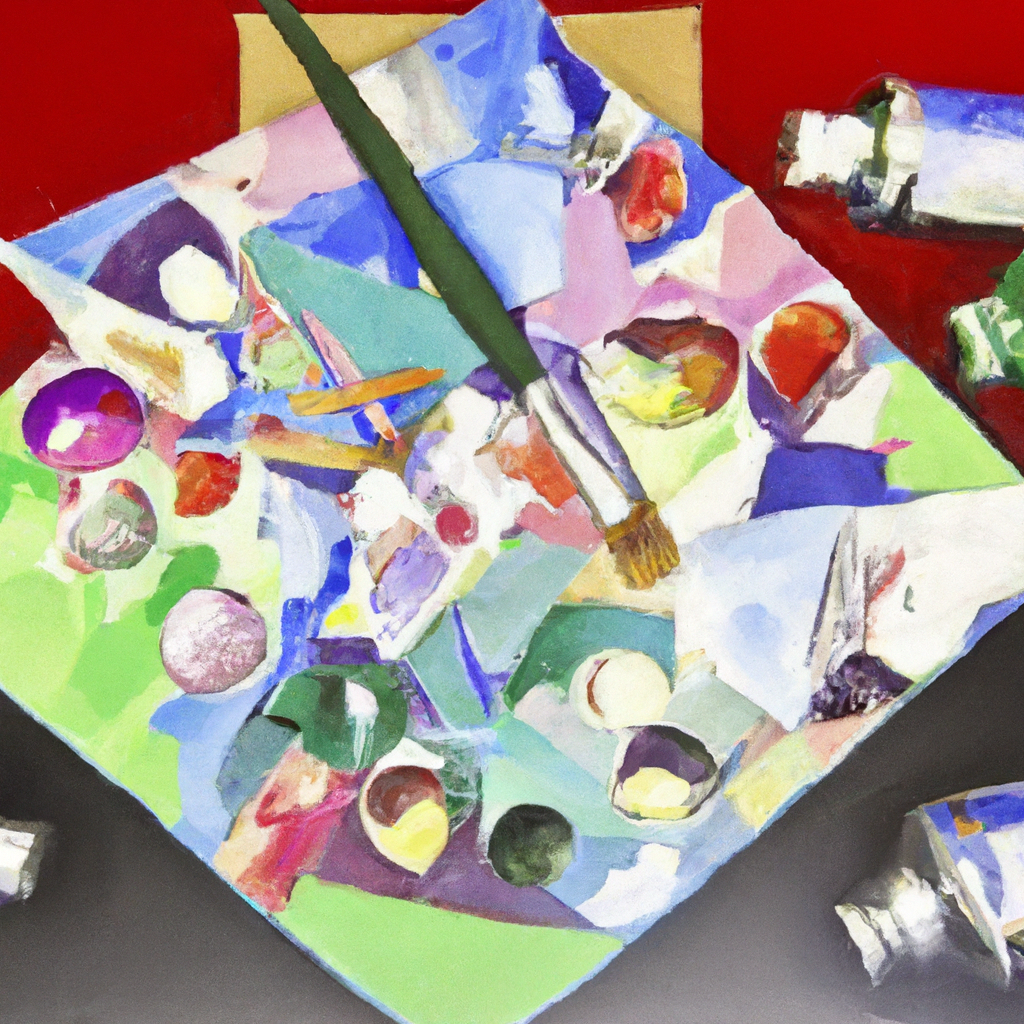In this article, you will discover a comprehensive guide on how to effectively paint 3D prints using acrylics. Painting 3D prints can enhance their appearance and bring them to life with vibrant colors and intricate details. With the rising popularity of 3D printing, it is crucial to develop the skills to effectively paint these prints to achieve desired results. By following the step-by-step instructions and employing proper techniques, you will be able to transform your 3D prints into stunning works of art using acrylic paints.
1. Materials Needed
To paint your 3D prints with acrylics, you will need the following materials:
1.1 Acrylic Paints
Acrylic paints are a popular choice for painting 3D prints due to their versatility, vibrant colors, and quick drying time. Make sure to choose high-quality acrylic paints that are suitable for your project.
1.2 Paintbrushes
Invest in a variety of paintbrushes with different sizes and shapes to achieve different effects. Flat brushes are great for large areas, while round brushes are ideal for details and fine lines.
1.3 Palette
A palette is essential for mixing and diluting your acrylic paints. You can use a traditional palette made of plastic or wood, or opt for a disposable palette pad for easy cleanup.
1.4 Sandpaper
Sandpaper is necessary to prepare your 3D prints for painting. Choose sandpaper with varying grits to smooth out any rough surfaces and create a clean canvas for your paint.
1.5 Primer
Priming your 3D prints before painting helps to enhance paint adhesion and smooth out imperfections. Use a suitable primer for your specific type of 3D print material, such as plastic or resin.
1.6 Masking Tape
Masking tape is useful for creating clean and precise lines when you want to paint different sections of your 3D print in different colors. It helps to prevent paint bleeding and ensures a professional finish.
1.7 Sealant
Applying a sealant over your finished paint job helps to protect it from scratches and fading. Choose a sealant that is compatible with acrylic paints and suitable for the type of finish you desire.
2. Preparing the 3D Print
2.1 Cleaning the Print
Before you begin painting, it is crucial to clean your 3D print thoroughly. Use a mild, non-abrasive cleaner and a soft cloth to remove any dust, dirt, or oil from the surface. This will ensure better paint adhesion and a smoother finish.
2.2 Sanding the Print
Sanding is an essential step in preparing the surface of your 3D print. Use sandpaper with a medium grit to gently sand the print, focusing on any rough areas or visible layer lines. Sanding helps to create a smooth and even surface for the paint to adhere to.
2.3 Applying Primer
After sanding, apply a thin coat of primer to your 3D print. Primer helps to fill in any imperfections and creates a uniform surface for the paint. Follow the manufacturer’s instructions for the specific primer you are using, including drying times.

This image is property of images.unsplash.com.
3. Choosing the Right Acrylic Paints
3.1 Acrylic Paints vs Other Types of Paints
Acrylic paints are a popular choice for painting 3D prints due to their fast drying time, durability, and versatility. They adhere well to a variety of surfaces and can be used on different types of 3D print materials, such as plastic, resin, or PLA. Unlike oil paints or watercolors, acrylic paints are water-based and can be easily cleaned up with water.
3.2 Color Selection
When choosing acrylic paint colors for your 3D prints, consider the overall look and feel you want to achieve. It’s helpful to have a basic color palette that includes primary colors (red, blue, yellow) along with black and white. You can mix different colors to create a wide range of shades and tones.
3.3 Glossy or Matte Finish
Acrylic paints come in different finishes, such as glossy, matte, or satin. Consider the desired look of your 3D print when selecting the finish. Glossy finishes tend to be more vibrant and shiny, while matte finishes offer a softer and more subdued look. Satin finishes provide a balance between the two.
4. Techniques for Painting 3D Prints with Acrylics
4.1 Brush Painting
Brush painting is a traditional and versatile technique for painting 3D prints with acrylics. It allows you to apply the paint with precision and control, making it perfect for details and fine lines. Use different brush sizes and shapes for different areas and effects.
4.2 Airbrushing
Airbrushing is a popular technique for achieving smooth and even paint coverage on 3D prints. It involves using an airbrush tool to spray a fine mist of paint onto the surface, creating a seamless finish. Airbrushing is particularly effective for large areas and can produce stunning gradients and fades.
4.3 Detailing
Detailing is the process of adding intricate and precise touches to your 3D prints. It typically involves using small brushes and careful brush strokes to create highlights, shadows, textures, or specific patterns. Detailing requires patience and steady hands but can greatly enhance the overall appearance of your print.
4.4 Layering and Blending Colors
Layering and blending colors is an advanced technique that can add depth and complexity to your 3D prints. By applying multiple thin layers of paint, you can create subtle transitions and gradients, achieving a more realistic and visually interesting result. Experiment with different colors and techniques to achieve the desired effect.

This image is property of images.unsplash.com.
5. Applying the Paint
5.1 Brush Painting Technique
5.1.1 Thin Layers
When brush painting your 3D prints, it is important to apply thin layers of paint. This allows for better control and prevents the build-up of thick or clumpy paint. Start with a small amount of paint on your brush and gradually build up the color if needed.
5.1.2 Building Up Layers
To achieve a vibrant and solid color, it may be necessary to apply multiple layers of paint. Allow each layer to dry completely before applying the next one. This will prevent smudging or mixing of colors and ensure a smooth and even finish.
5.2 Airbrushing Technique
5.2.1 Preparing the Airbrush
Before airbrushing your 3D print, make sure your airbrush tool is clean and properly set up. Dilute your acrylic paint with water or a suitable airbrush thinner according to the manufacturer’s instructions. Test the consistency of the paint on a scrap piece to ensure optimal flow and coverage.
5.2.2 Applying Thin Coats
When airbrushing, apply thin and even coats of paint. Start with a light mist and gradually build up the color intensity as needed. Keep the airbrush moving in a smooth and consistent motion to avoid pooling or oversaturation of paint in one area. Allow each coat to dry before applying another.
5.3 Detailing Technique
To add detailed touches to your 3D prints, use small brushes with fine bristles. Dip the tip of the brush into the paint and gently dab off any excess. Apply the paint with controlled and precise brushstrokes, focusing on the areas you want to highlight or add texture to.
5.4 Layering and Blending Technique
To create depth and dimension in your 3D prints, experiment with layering and blending colors. Start with a base color and gradually layer additional colors on top, allowing each layer to dry before adding the next. Use a clean brush or a dry brush technique to blend the colors together for a seamless transition.
6. Drying and Curing the Paint
After applying the paint to your 3D print, allow it to thoroughly dry and cure. This can take several hours or even days, depending on the type and thickness of the paint layers. Avoid touching or moving the print during this time to prevent smudging or damage to the paint. Follow the manufacturer’s instructions for specific drying and curing times.

This image is property of images.unsplash.com.
7. Adding Finishing Touches
7.1 Gloss or Matte Varnish
Applying a varnish is an excellent way to protect and enhance the appearance of your painted 3D prints. Choose a varnish with a glossy or matte finish, depending on your preference. Apply the varnish using a brush or airbrush, following the manufacturer’s instructions.
7.2 Adding Texture
If you desire a textured finish on your 3D prints, there are various techniques you can try. You can use a dry brush technique to create a slightly rough texture or use specialized texture paints to achieve specific effects, such as stone or metal textures.
7.3 Weathering or Distressing
To give your 3D prints a weathered or distressed look, you can use techniques such as dry brushing, washes, or creating scratches and chips. These techniques can add realistic wear and tear, enhancing the overall appearance of your print.
8. Troubleshooting and Tips
8.1 Paint Not Adhering Properly
If you are facing issues with paint not adhering properly to your 3D prints, ensure that you have properly cleaned and primed the surface. It is also essential to use high-quality acrylic paints that are suitable for your specific type of 3D print material. Experiment with different brands or seek advice from experienced painters.
8.2 Paint Cracking or Chipping
To avoid paint cracking or chipping, make sure to apply thin and even layers of paint. Thick or clumpy layers are more prone to cracking as they dry. Additionally, allow each layer to dry completely before applying the next one. Using a suitable sealant can also help protect the paint from damage.
8.3 Avoiding Brushstrokes
If you want to achieve a smooth and brushstroke-free finish, consider using techniques such as airbrushing or layering multiple thin coats of paint. Additionally, using high-quality brushes and taking your time during the painting process can help minimize visible brushstrokes.

9. Cleaning and Maintenance
After completing your painting project, it is essential to clean your brushes and any equipment used promptly. Rinse your brushes thoroughly with water or a suitable brush cleaner to remove any paint residue. Store your brushes in a cool and dry place to maintain their shape and quality. Additionally, ensure that your painted 3D prints are kept in a clean and dust-free environment to preserve their appearance.
10. Conclusion
Painting 3D prints with acrylics can be a highly rewarding and creative process. By following the necessary steps to prepare your prints, choosing the right materials, and utilizing various painting techniques, you can achieve stunning and professional results. With practice and experimentation, you can create unique and visually captivating pieces of art with your 3D prints. Remember to remain patient, pay attention to detail, and enjoy the process of bringing your prints to life through the power of acrylic paint.




